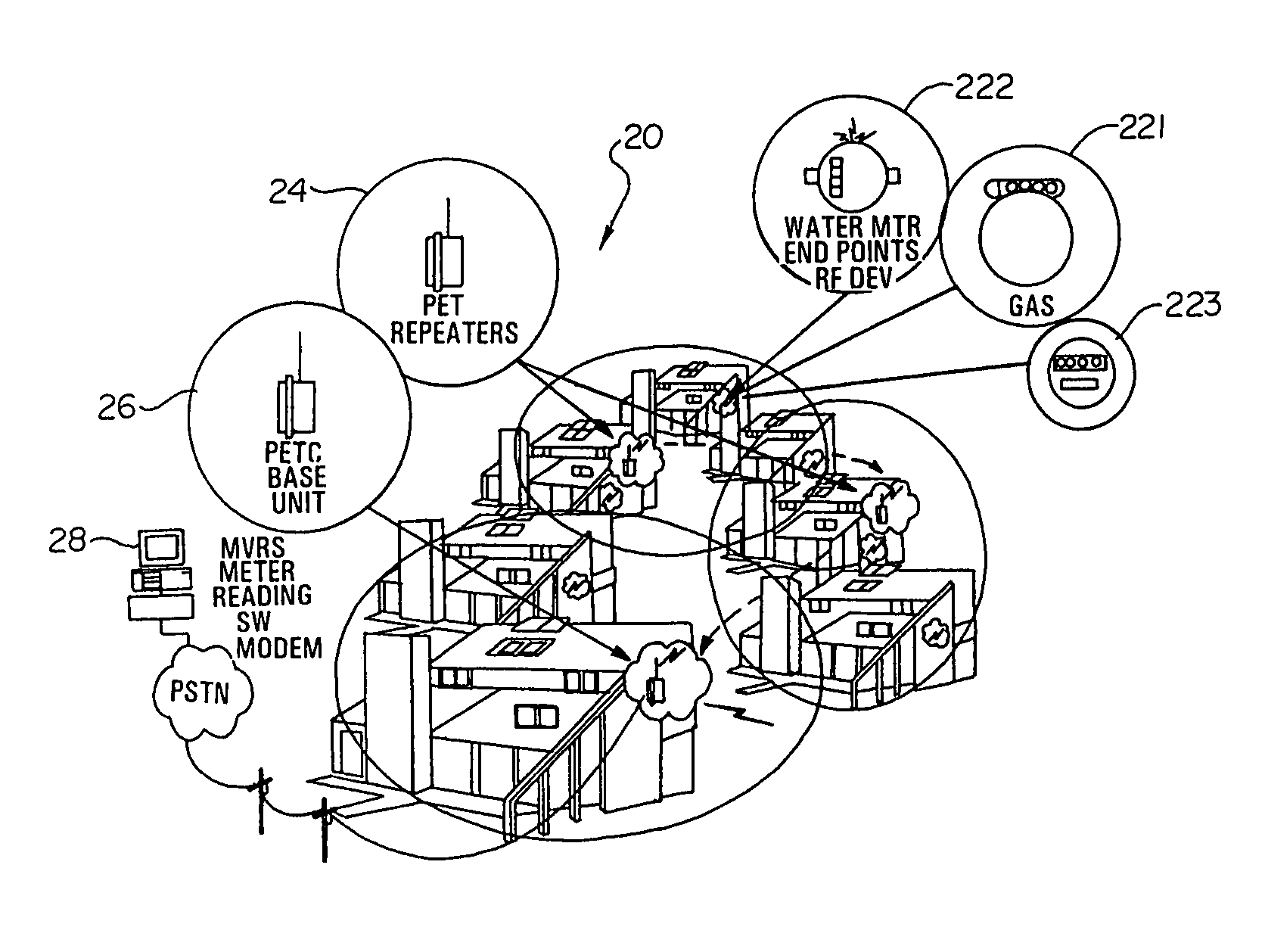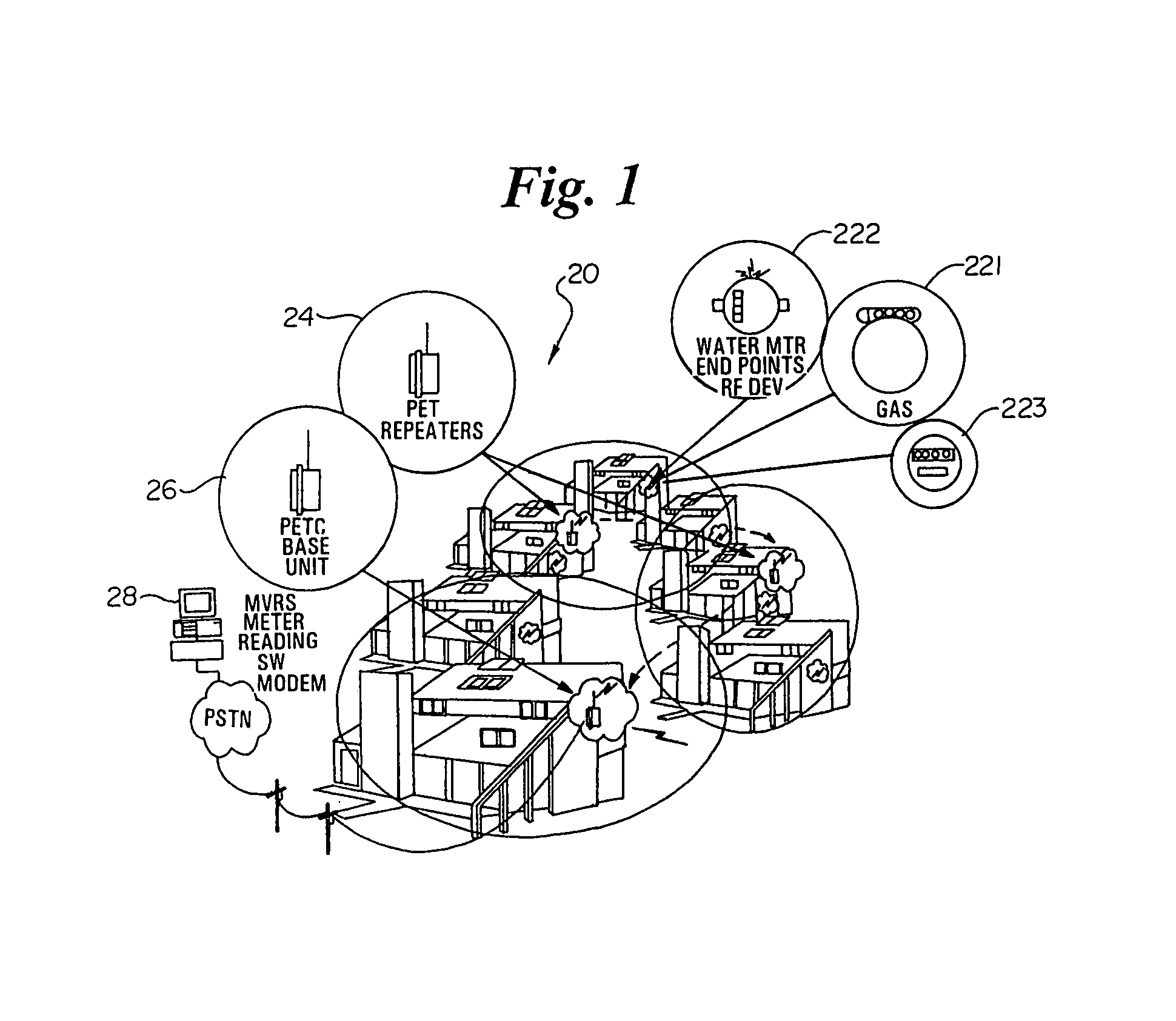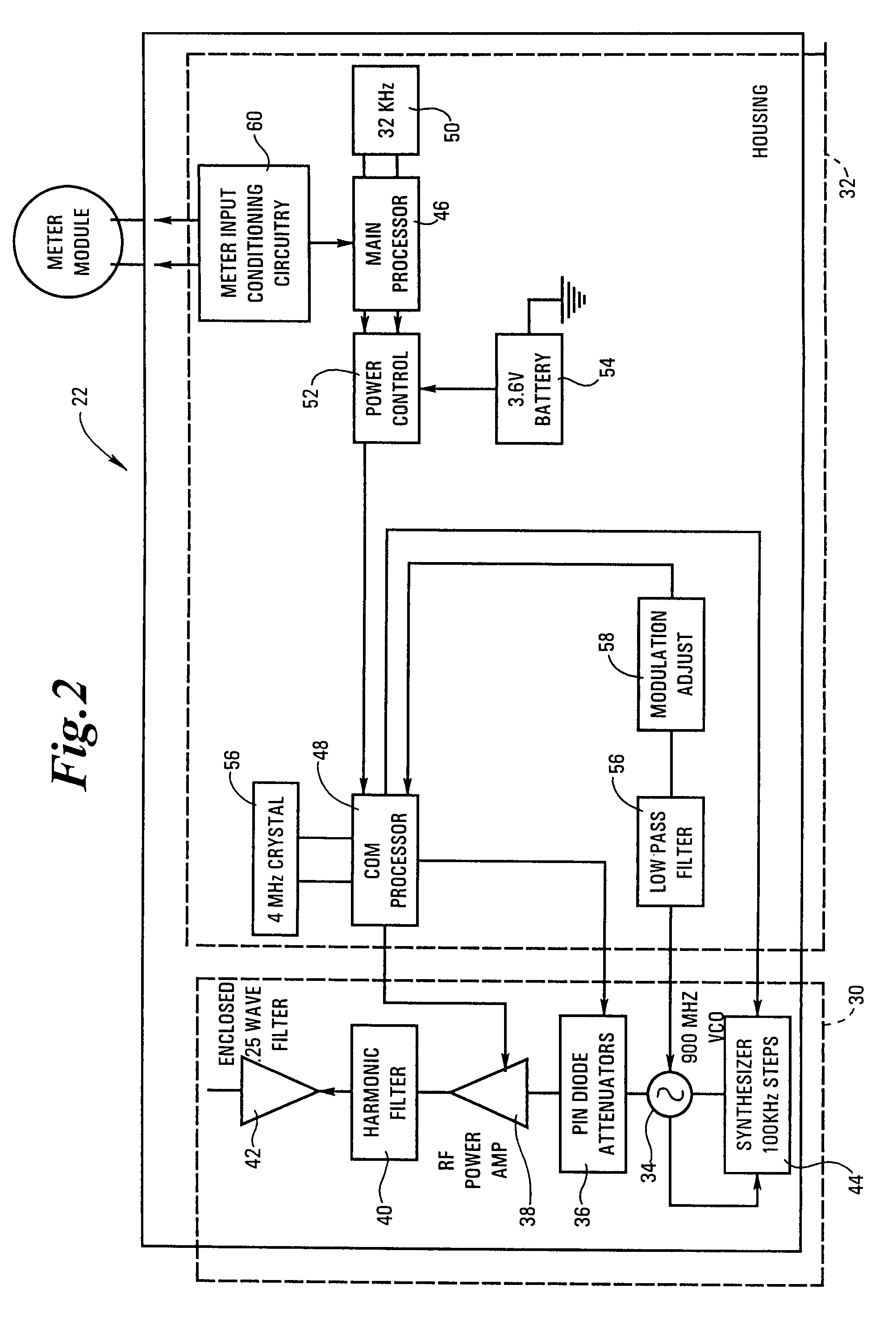Spread spectrum meter reading system utilizing low-speed/high-power frequency hopping
a reading system and spectrum technology, applied in the field of utility metering systems, can solve the problems of high power consumption, increased cost associated, and high cost of dsss, and achieve the effect of increasing battery life and reducing power consumption
- Summary
- Abstract
- Description
- Claims
- Application Information
AI Technical Summary
Benefits of technology
Problems solved by technology
Method used
Image
Examples
Embodiment Construction
[0036]The utility metering system of the present invention operates to monitor and retain data on a plurality of water, electric, and gas utility meters, e.g., up to 1000 utility meters, that are typically located within multi-dwelling or high-rise environments.
I. System Components
[0037]Referring to FIG. 1, the utility metering system 20 generally comprises a plurality of meter end point encoder transmitter devices, or PET modules 22, that include gas PET modules 221, water PET modules 222, and electric PET modules 223. The system 20 further comprises a plurality of repeater units 24, one or more base units 26, and a head-end, software-driven, meter reading analysis device 28.
I.A. PET Module
[0038]Each PET module 22 is preferably a radio frequency (RF) transmit-only device that gathers and encodes utility consumption and tamper information, then transmits this data with other information via RF to the repeater units 24 or base units 26 periodically, for example, every 10 to 15 minute...
PUM
| Property | Measurement | Unit |
|---|---|---|
| Time | aaaaa | aaaaa |
| Power | aaaaa | aaaaa |
| Transmission | aaaaa | aaaaa |
Abstract
Description
Claims
Application Information
 Login to View More
Login to View More - R&D
- Intellectual Property
- Life Sciences
- Materials
- Tech Scout
- Unparalleled Data Quality
- Higher Quality Content
- 60% Fewer Hallucinations
Browse by: Latest US Patents, China's latest patents, Technical Efficacy Thesaurus, Application Domain, Technology Topic, Popular Technical Reports.
© 2025 PatSnap. All rights reserved.Legal|Privacy policy|Modern Slavery Act Transparency Statement|Sitemap|About US| Contact US: help@patsnap.com



